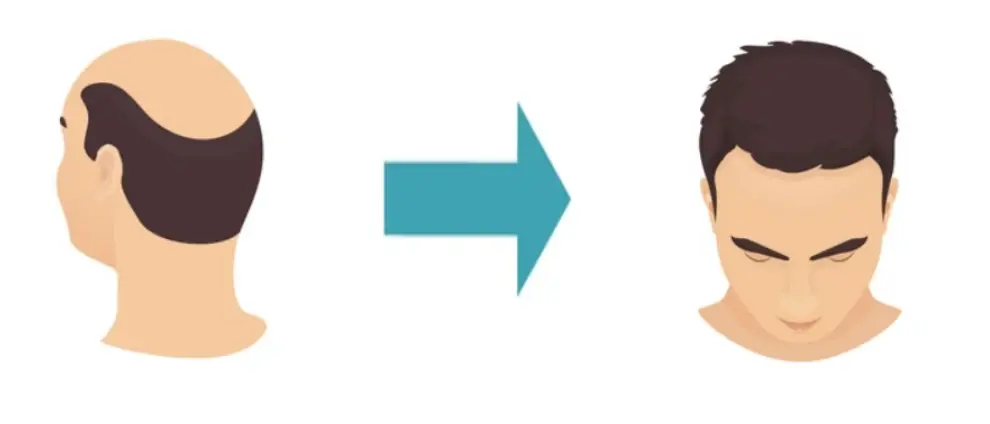
PRP vs. PRF for Hair
Hair loss and thinning are common problems affecting millions of people worldwide. As the quest for effective treatments continues, Platelet-rich Plasma (PRP) and Platelet-rich Fibrin (PRF) have emerged as promising options. Both are autologous treatments, meaning they utilize a patient's own blood to stimulate hair growth. However, they are not the same. This article delves into the differences between PRP and PRF and their efficacy in treating hair loss.
Hair loss and thinning are common problems affecting millions of people worldwide. As the quest for effective treatments continues, Platelet-rich Plasma (PRP) and Platelet-rich Fibrin (PRF) have emerged as promising options. Both are autologous treatments, meaning they utilize a patient's own blood to stimulate hair growth. However, they are not the same. This article delves into the differences between PRP and PRF and their efficacy in treating hair loss.
What is Platelet-rich Plasma (PRP)?
PRP therapy involves drawing a small amount of a patient's blood, processing it to concentrate the platelets, and then injecting it into the scalp. Platelets are a type of blood cell that are rich in growth factors. These growth factors, when injected into areas of thinning hair, can stimulate the hair follicles, promoting hair growth and thickness.
Procedure:

- Blood is drawn from the patient.
- It is then placed in a centrifuge, which spins at high speeds to separate the components of the blood.
- The PRP is extracted and injected into the scalp where hair loss has occurred.
What is Platelet-rich Fibrin (PRF)?
PRF is considered to be the second generation of PRP. Like PRP, PRF also uses the patient's blood, but the processing is slightly different.
Procedure:
- Blood is drawn from the patient.
- It is then placed in a centrifuge at a lower speed and for less time compared to PRP.
- The PRF, which is a more solid form than PRP, is extracted and then injected into the scalp.
Key Differences
1. Composition:
- PRP contains a higher concentration of platelets and plasma but has a low concentration of white blood cells and no fibrin network.
- PRF contains not only a high concentration of platelets but also a rich fibrin matrix, and a small number of white blood cells, which are crucial for the healing process.
2. Processing:
- PRP requires anticoagulants to prevent the blood from clotting during processing.
- PRF doesn't require anticoagulants. It forms a fibrin matrix which makes it more gel-like compared to PRP.
3. Release of Growth Factors:
- In PRP, growth factors are immediately released upon injection.
- In PRF, the fibrin matrix allows for a slow release of growth factors over time.
4. Application Form:
- PRP is liquid and therefore disperses quickly throughout the tissue.
• PRF is more of a gel and stays localized at the injection site for a longer time.

Which One is Better for Hair?
Both PRP and PRF therapies have shown promise in treating hair loss. PRP has been around for a longer time and there is more evidence supporting its efficacy. However, the slow release of growth factors in PRF is thought to offer better, more sustained benefits.
It's important to note that individual responses can vary, and what might work for one person might not work for another. Consulting a doctor who is experienced in both procedures is vital for making an informed decision.
In conclusion, PRP and PRF are innovative treatments that utilize the body's own healing properties to combat hair loss. While they are similar, the subtle differences in composition and processing can make them more suitable for different individuals and conditions.
Last Updated: Aug 7, 2025
Last Updated: Aug 7, 2025
FAQs
What are Platelet Rich Plasma (PRP) and Platelet Rich Fibrin (PRF)?
How are PRP and PRF products prepared?
How do PRP and PRF contribute to healing and tissue regeneration?
Are PRP and PRF injections painful?
How long does it take to see improvement after PRP or PRF treatment?
What is the final product in PRP and PRF?
Schedule My Meeting
Location*
Doctor*

-2.jpg?width=2000&height=2000&name=Copy%20of%20YouTube%20Thumbnail%20-%20Life-Changing%20Cosmetic%20Surgery!%20(Document)-2.jpg)

